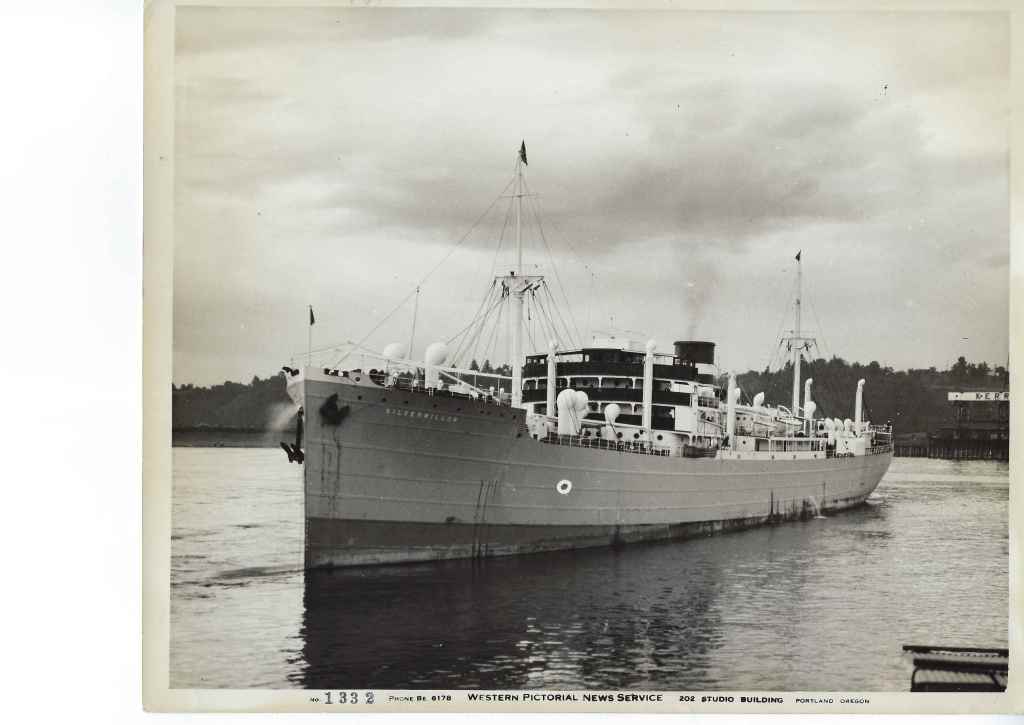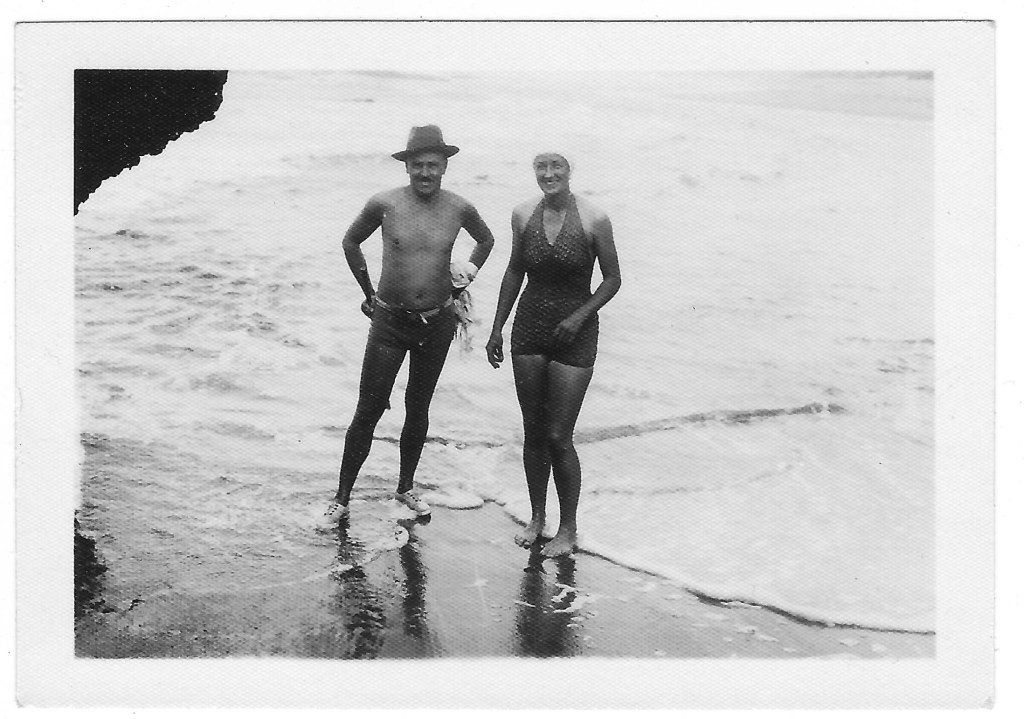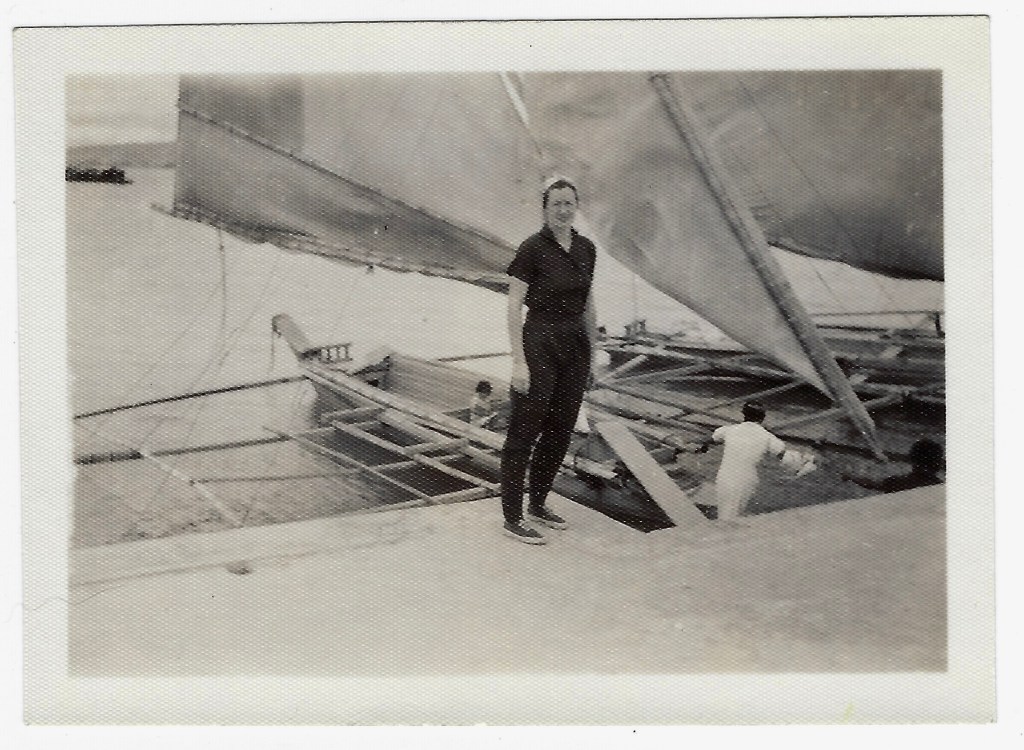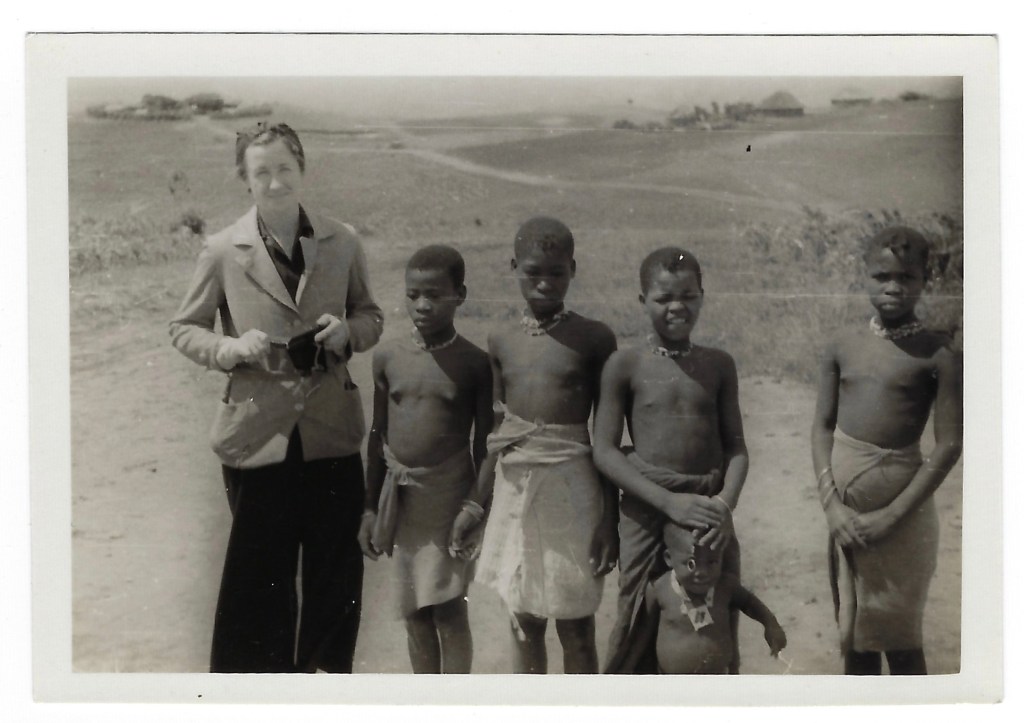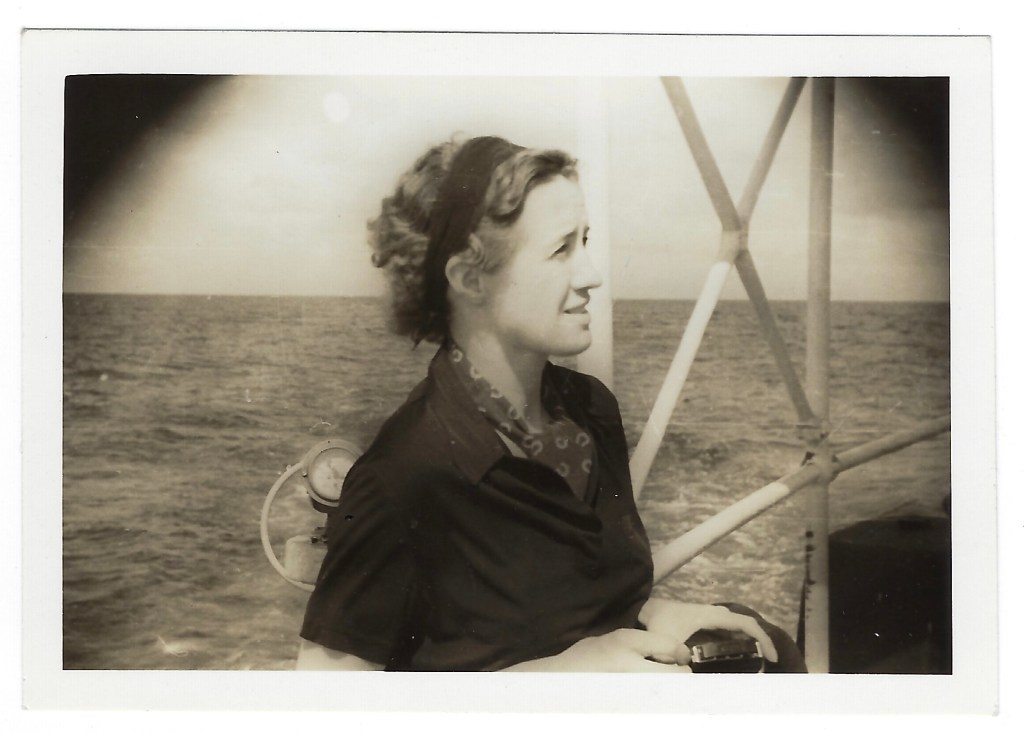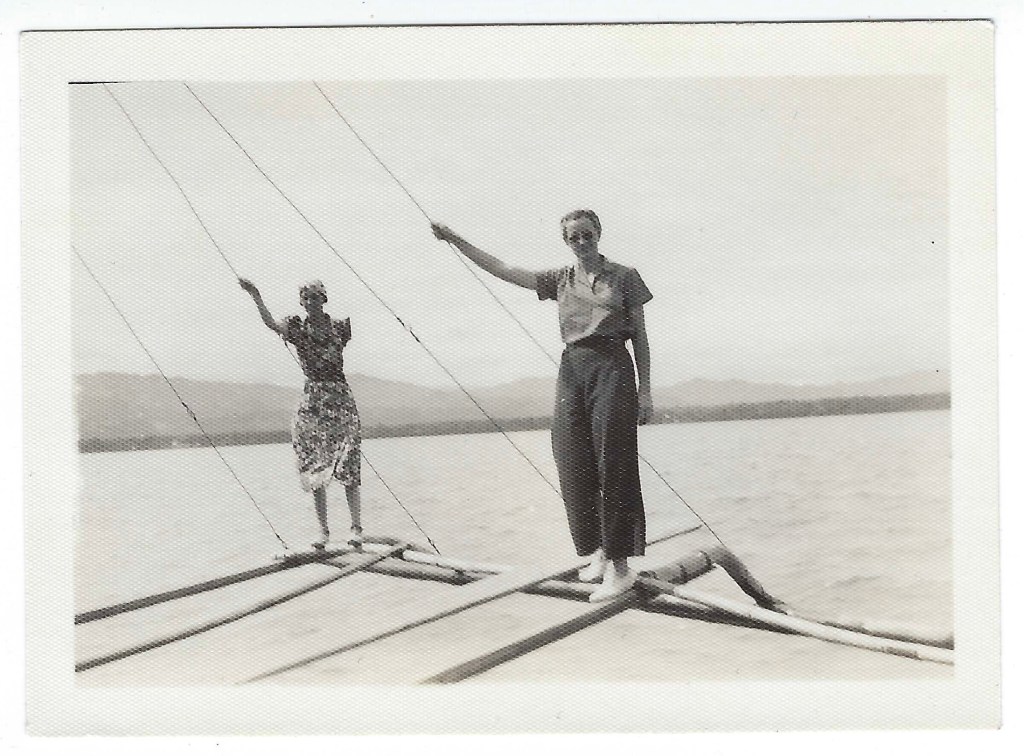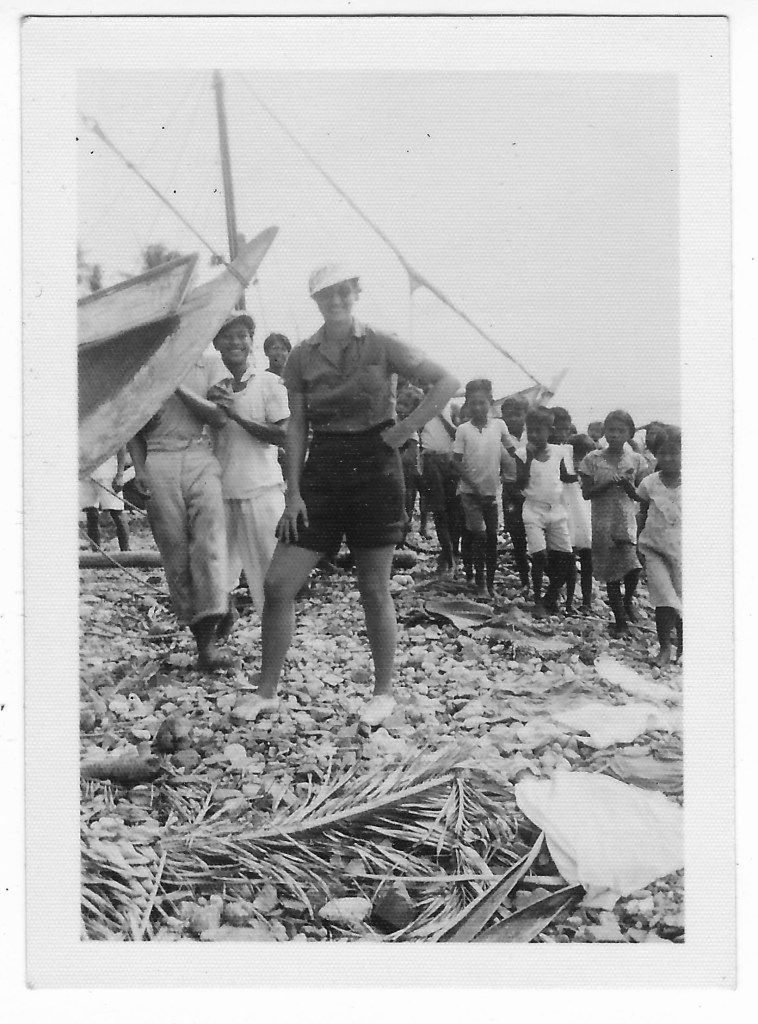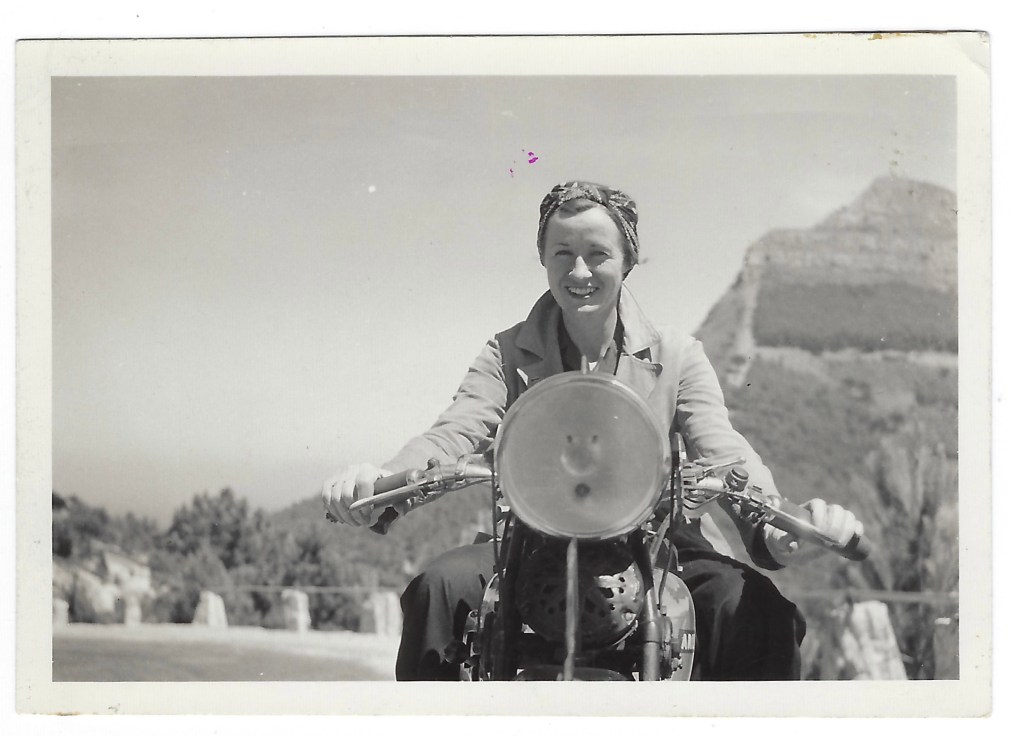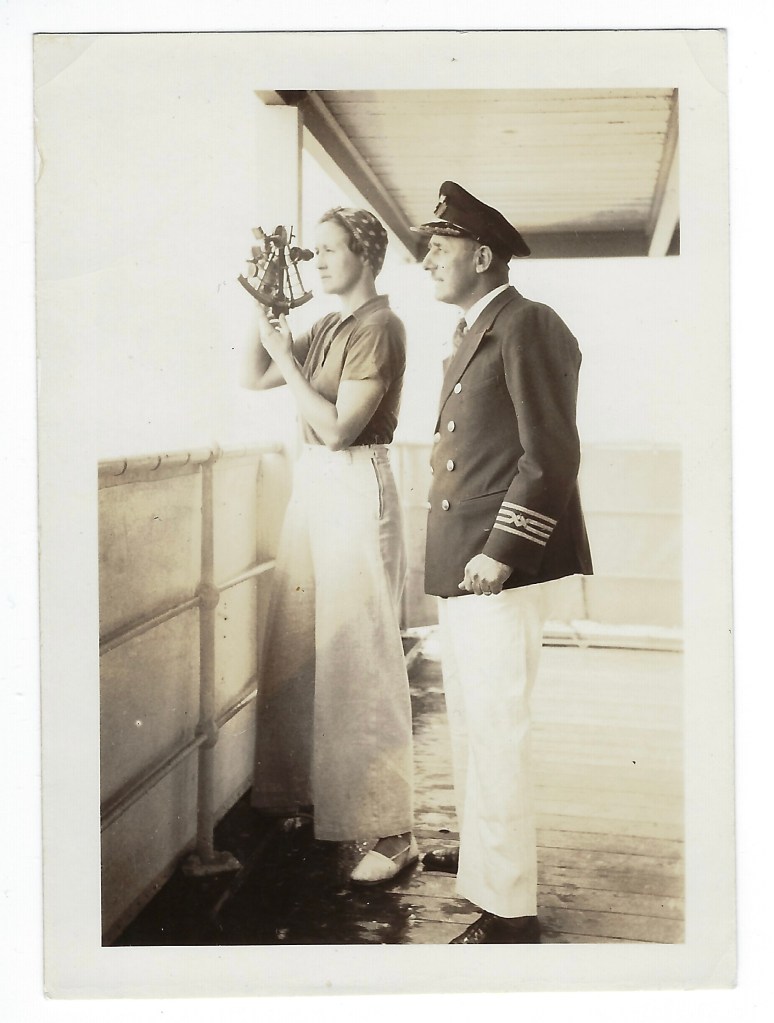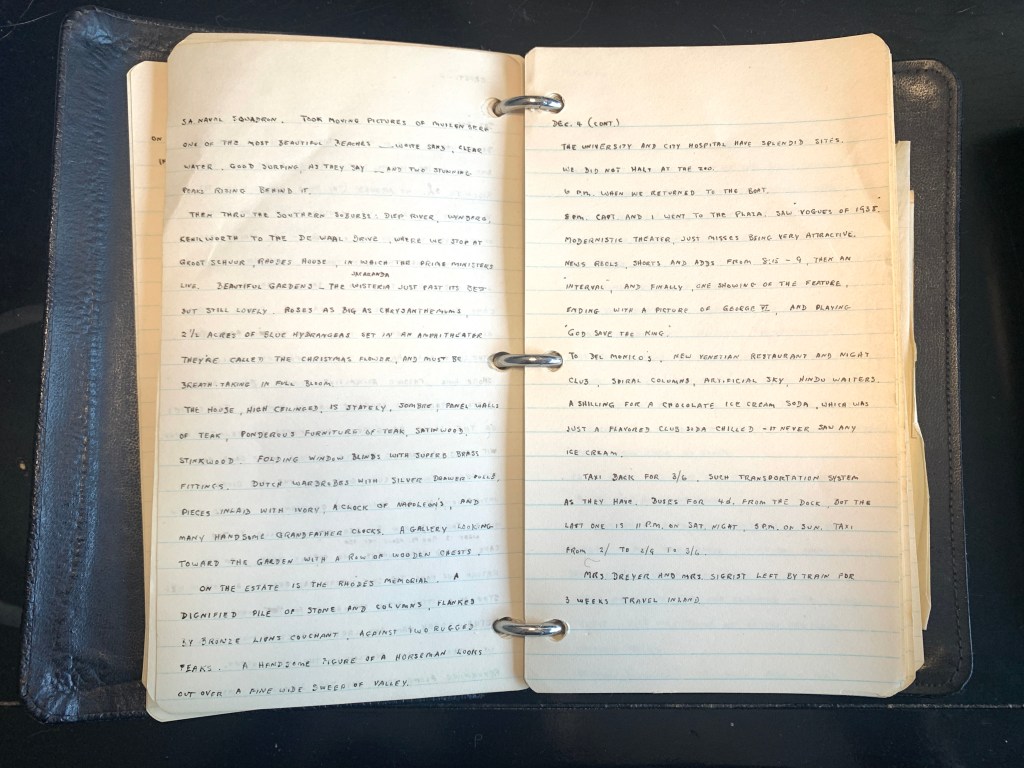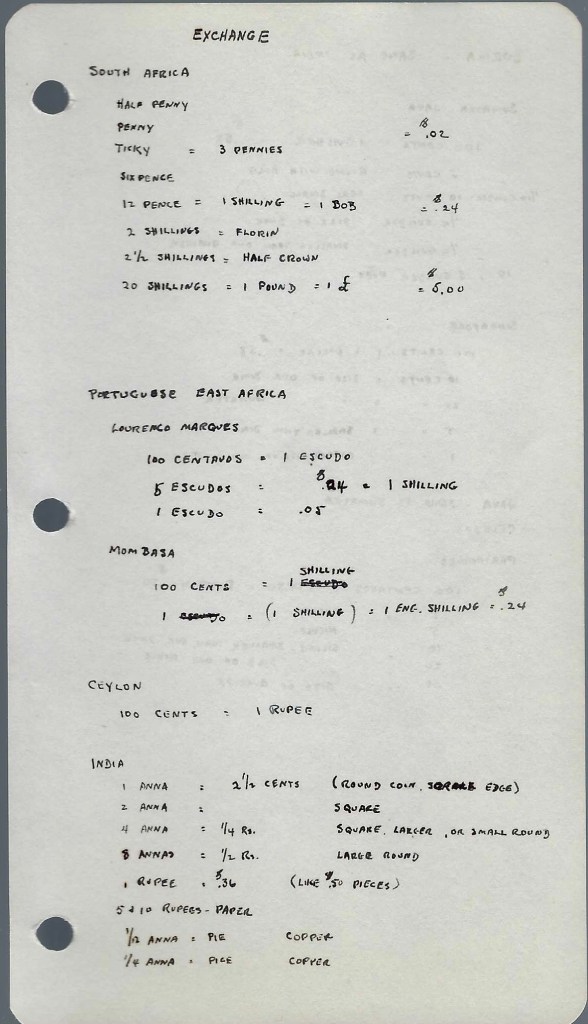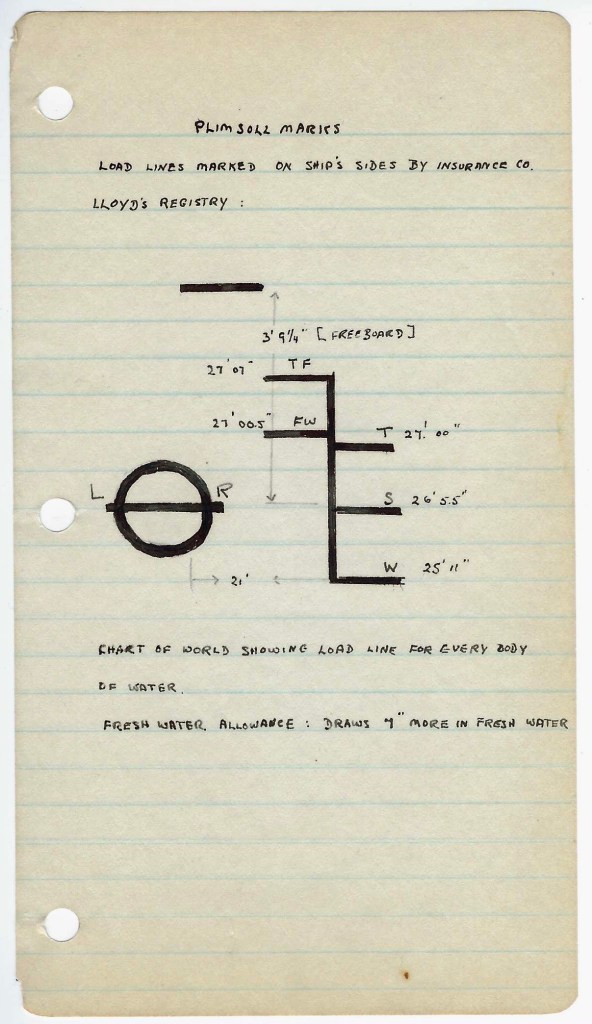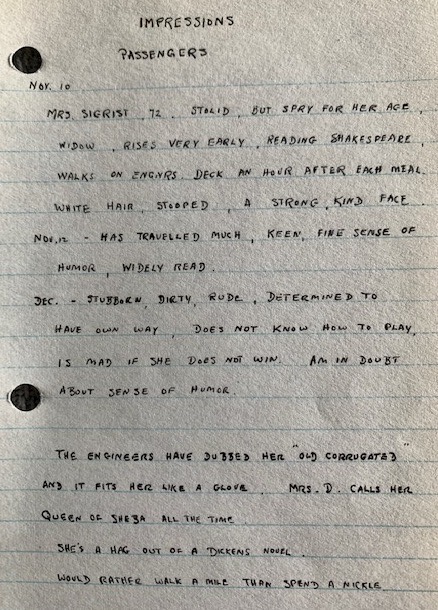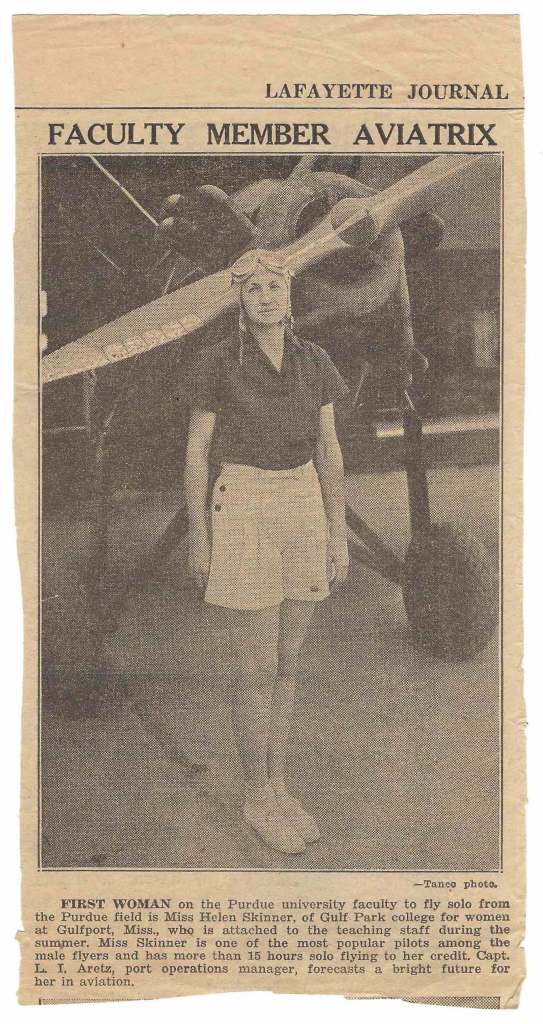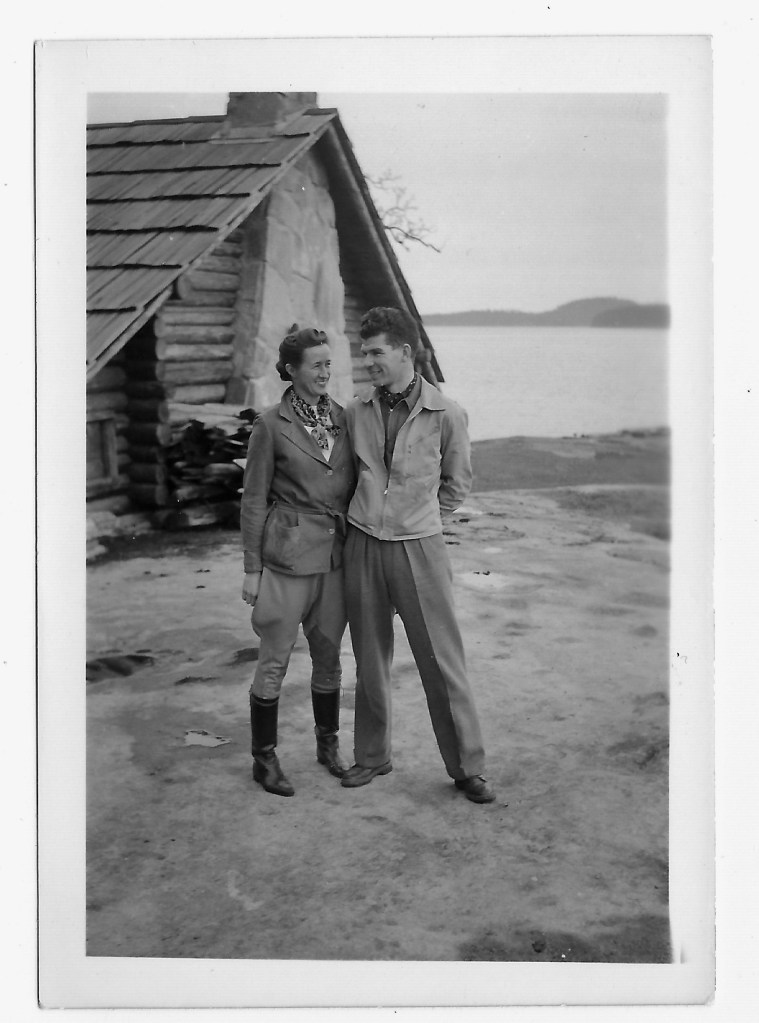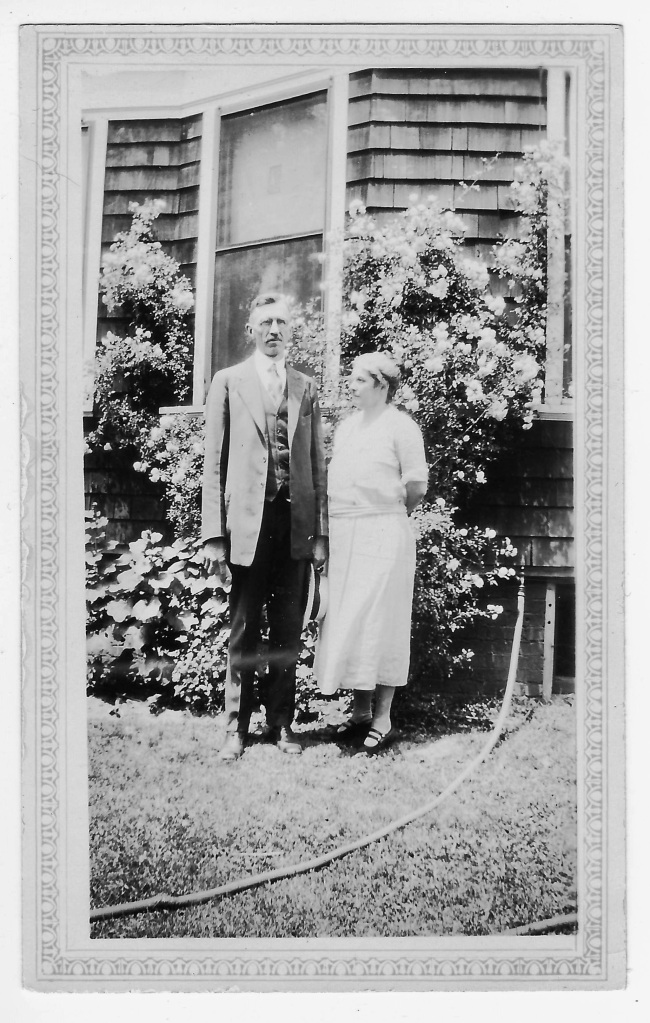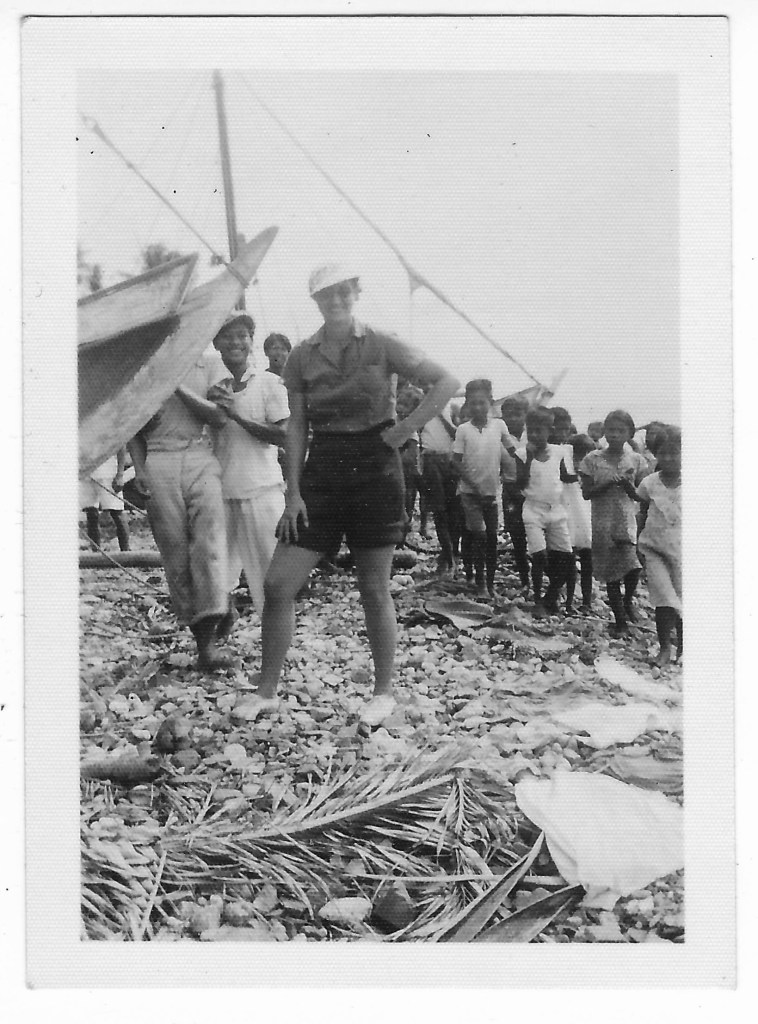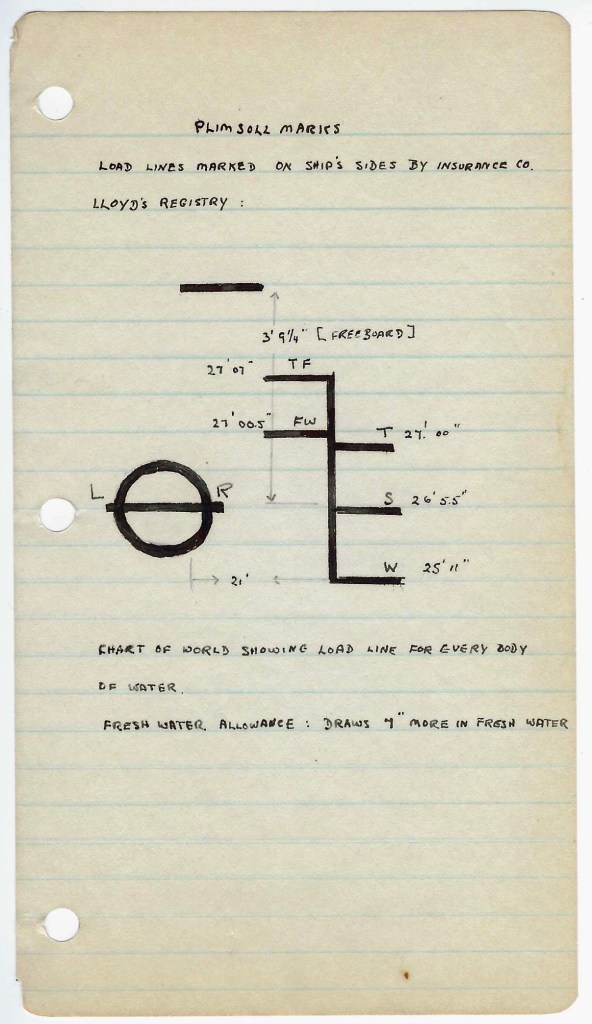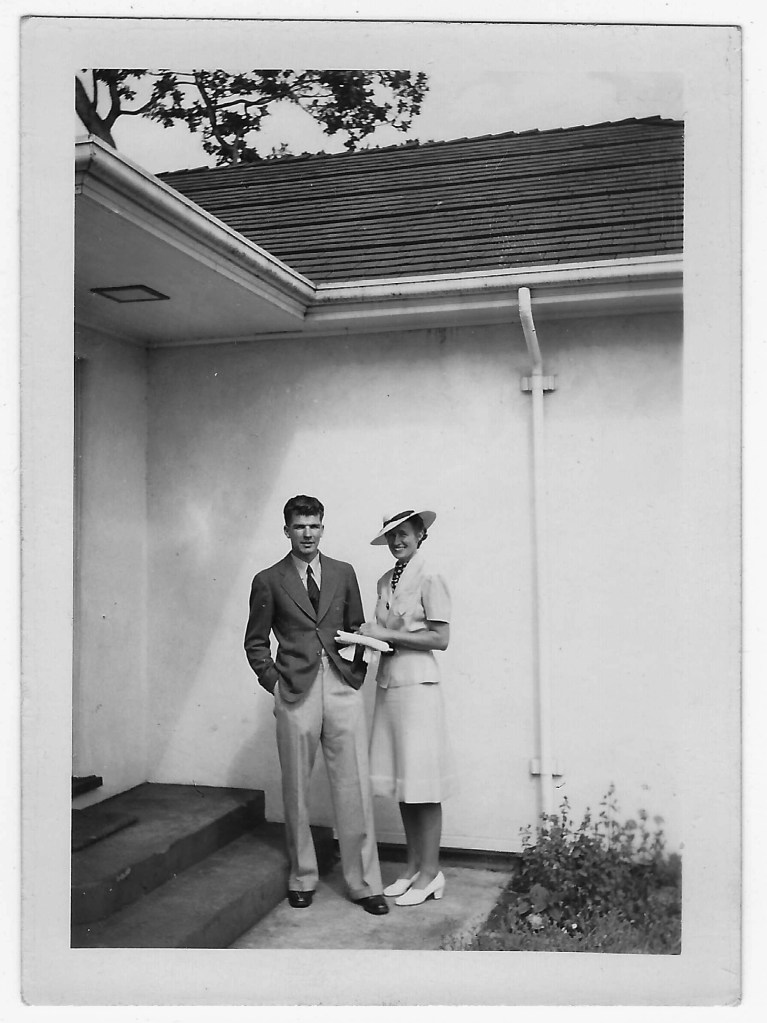Mon. Mar 21: Woke up just as we passed under the Golden Gate Bridge and came abreast of Alcatraz, under the Oakland Bridge and had a vista of San Francisco apartment buildings high on the hills straining to see over the heads of their neighbors. Docked at Alameda before 8 ... took the train and ferry across to S.F.
Side notes: Floating under the 10-month old Golden Gate Bridge at daybreak would be a memorable introduction to the bay.
Alcatraz was a real prison then.
Uncle Jack came down to meet me. To town by cable car to the dentist. Dead nerve in top, aft, port tooth. Dr. Johnson opened it, let out the pus, took an x-ray.
Side note: ‘Top, aft, port tooth’ is cheeky ship terminology for ‘Top, back, left tooth’.
I’m 90% sure that the picture below is Jack Bunyan, or Uncle Jack. So add 25ish years to him. Their families were always neighbors, near Albany and in Brooklyn, and his daughter is Helen’s cousin/bestie Betty Smeallie Bunyon (aka Betty Smelly Onion). She’ll be back in the story soon.
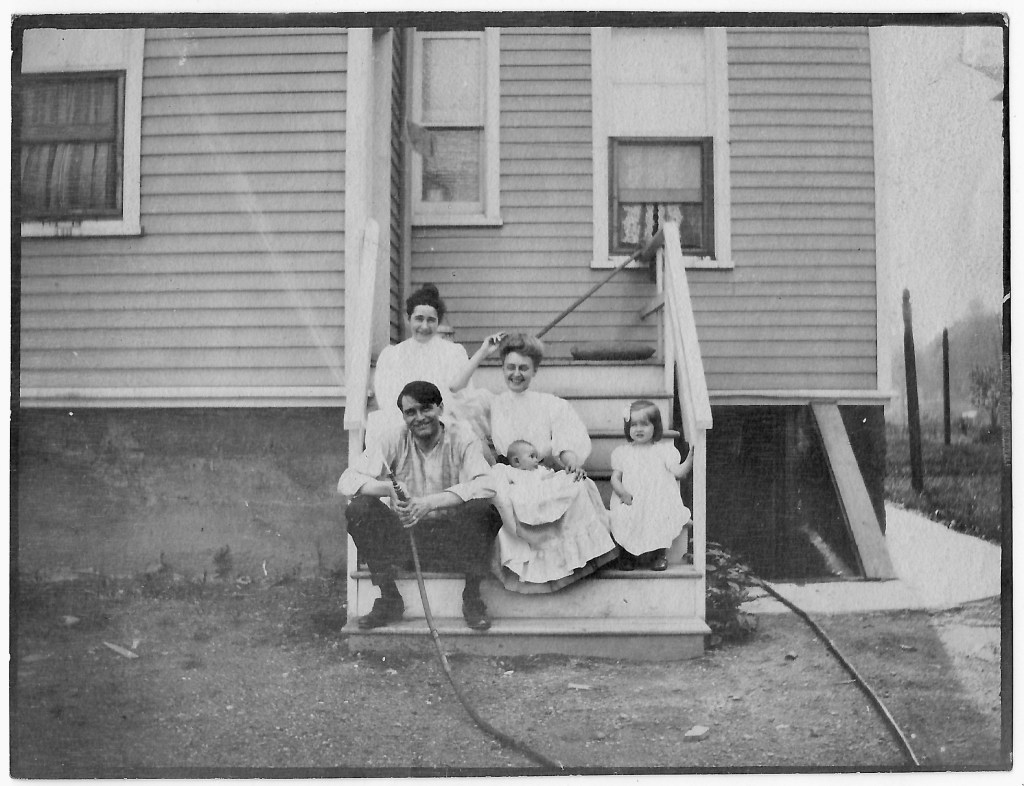
1870 Jackson #503 is a beautiful apartment, large living room, two bedrooms with baths, dining room, kitchen, maid's room and bath.
Side note: That apartment survives today as one unit, per the Internet. To landlord types, three bathrooms = at least three apartments. I lived in a similarly shaped place in SF, and one of the bedrooms was clearly once a dining room, complete with painted shut sliding doors. I lived in a narrow room in the back, behind the kitchen, on the first floor of what would have been a two story house, and it had its own bath, so most surely the maid’s room.
Uncle Jack and I to Pier #54 at 9:00. No boat, wharf dark, but two men said it would be in at 10:00. Back to Hotel St. Francis, to the pier again at 10:00 - boat in bay, no one of dock. Taxi $4.50. Called Mother - perfect connection - 6 min $8.20.
Side note: In today’s money, that six minute $8.20 phone call would be $185.98. An international call back then was $50 for three minutes ($1,134 in today’s dollars). So I’m going to guess this was the first time that Helen had spoken to her mother in almost six months. What might they have covered in six minutes after a six month trip around the world? Helen’s studies of celestial navigation? Her zoom up Table Mountain on the back of a motorcycle? The moonrise over the Taj Mahal? The raucous rickshaw ride through Rangoon? The looks she got stepping out in Manila wearing slacks? Sleeping out on the boat deck in the he hammock she crafted?
That might leave a little time for news about the parents, her baby sister, nine years her junior (joyfully pregnant with her 2nd child — i.e. my mother), when she’d be back home. Then, there might be a few seconds for Helen to mention a certain sailor man, younger than her baby sister by a few, whom she is now going to marry, and oh and he lives in Canada and so will she. Six minutes over and out!
And the two nighttime dock visits… I thought at first she was waiting for her hot beau Shag on that dark wharf. But no, she was waiting on her luggage. She’ll reunite with Shag soon enough though. So here is a cute picture of him during that Table Mountain ride:
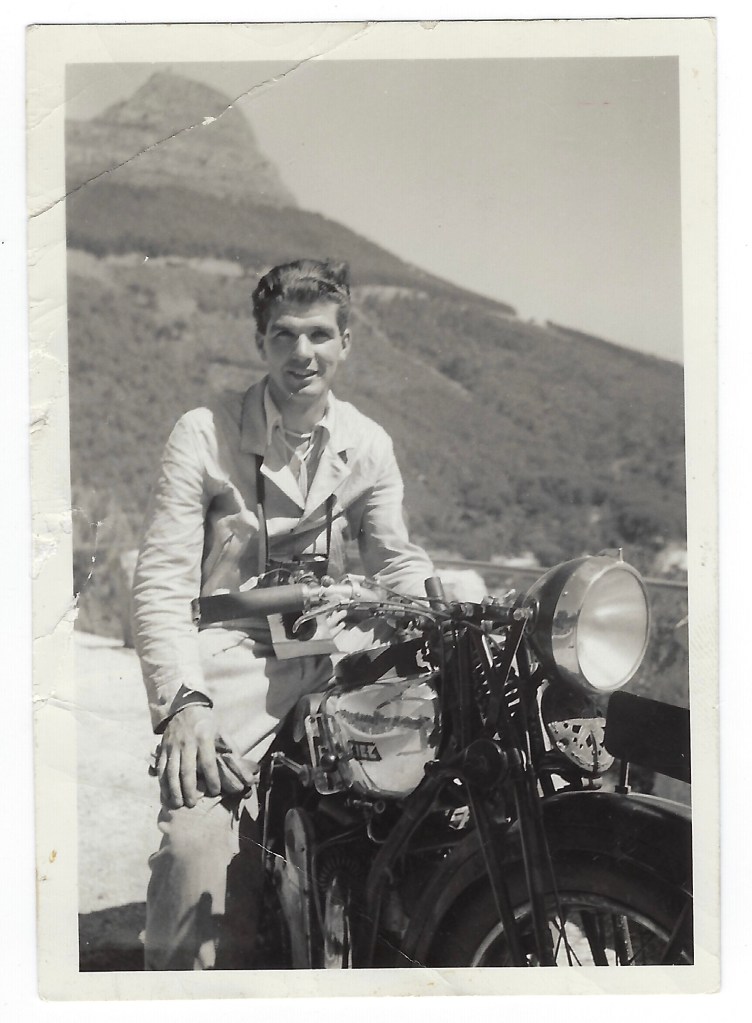
Got my trunk off the boat and thru customs at 4:00 and the Express Co. sent for. Mrs Dreyer's niece took us riding along the Embarcadero, then thru the Presidio, past the Coit Tower, Fisherman's Wharf, Legion of Honor Memorial. Band stand, Japanese Tea Garden. Across Golden Gate Bridge and back...
Side note: Coit Tower was a baby tower, circa 1933. Here’s a fun video of SF in the era.
Wed. Mar. 23: Rain, but left for Stockton about 9:00 a.m. Lunched at Hotel Stockton & window shopped. I bot black gloves to replace the ones that mildewed on the boat. Drove around the town - out to College of the Pacific was glad to find I hadn't forgotten to stay on the right side of the road. Started the return trip at 5:30, rain most of the way, growing harder as darkness came.
Side note: Stockton is 82 miles from San Francisco, so not a wee jaunt.
Thur. Mar. 24: Ready to go North on the bus tonight. Called Ruth. The pictures hadn't come. I relaxed, there being nothing else to do. At 3:30 Ruth called, pictures arrived. I rushed into some clothes, to Daisy's house, sorted my pictures, was home again just after six.
Side note: That is our problem in this era. We never relax because there is ALWAYS something else to do, or at least look at. Let’s do more nothing.
Fri. Mar 25: To Golden Gate Park - Nat. Hist. Museum, aquarium, aviary. To be ready to meet "Grampy" at Hotel Fairmont for cocktails. I showed pictures, talked a great deal about my travels. Hope the public won't be too bored.
Side note: I think Grampy is Uncle Jack, so still the guy with the hose:

Sat. Mar 26: To Jack's office and lunch ... at the Stock Exchange Club. Drive ... thru Menlo Park, Tanforan, Burlingame, San Mateo, Palo Alto. Visited Allied Arts. To Stanford, thru the Quad to the chapel, mosaic pictures outside and inside, handsome windows.
Side note: I worked near the Stock Exchange Club building in 2006ish!
Sun. Mar. 27: Uncle Jack ... put me on the bus for Portland at 6:45 p.m. The seats were very comfortable. I had the whole seat to myself - the driver excellent - the road smooth. It was dark before we crossed the Oakland Bridge, we stopped frequently, and there was no sleep. Tried Ovaltine at the 2:00 a.m. rest stop and after that I dozed some.
Side note: I’ve never heard such pleasant words associated with bus travel.
Mon. Mar 28: As it began to get light we were in snow covered mountains in the Siskiyous, the pines and firs lined the road - it was gorgeous. Weathered a dozen snow storms, some rain. Vista after vista of snowy peaks - a lovely morning. By afternoon we were getting down into flat country, dull, uninteresting, drab towns, small ugly houses. Lunched there and changed buses. Reached Portland at 5:35 p.m. and Betty was at the station to meet me. So good to see her - had a grand visit in the evening.
Side note: If you have to be on a bus, that part of the country is the place to do it. Now she’s reunited with her very best friend, childhood neighbor, and cousin: Betty Bunyan (Grampy / Uncle Jack’s daughter). She is the unhappy looking older child below (the one with the striped shirt):

Next up, Shag arrives in Portland and meets the family. How will he do??




